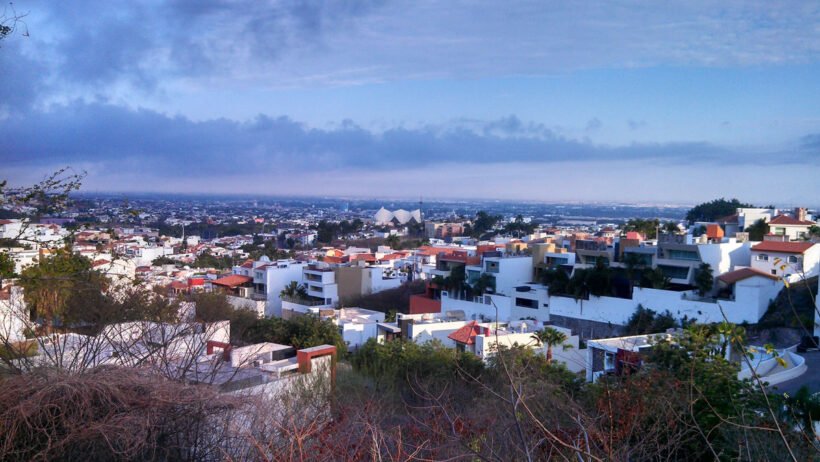Introduction to El Alamo
Deep in the agricultural heartland of northwestern Mexico, you’ll find El Alamo, a charming rural hamlet that captures the essence of traditional Mexican countryside life. This quiet community, officially known as a rancho, sits peacefully within the sprawling territory of Culiacán Municipality in Sinaloa state.
Home to just 229 people as of 2014, El Alamo tells the story of Mexico’s enduring rural spirit. The village has managed to keep its old-world charm intact while slowly embracing the changes that come with modern life.
Positioned at 24°31′37″N 107°7′15″W, this little community welcomes both curious visitors and researchers who want to experience authentic rural Mexico. What makes El Alamo special isn’t just its size, but how it shows us that traditional Mexican villages can still flourish within today’s municipal systems.
Geographic Location and Setting
Position Within Sinaloa State
El Alamo sits in a prime spot within Sinaloa, a state known throughout Mexico for its incredible agricultural output. At 111 meters above sea level, the village enjoys the benefits of the rich coastal plains that make this region so fertile.
The hamlet rests about 50 miles from the Gulf of California, right in the middle of the agricultural zone that has put Sinaloa on Mexico’s map. This puts El Alamo perfectly between the coastal lowlands and the foothills of the Sierra Madre Occidental mountains.
Thanks to its location, El Alamo taps into the sophisticated irrigation networks that have turned the Culiacán River valley into one of Mexico’s agricultural powerhouses. These water systems help grow corn, sugarcane, tobacco, and countless fruits and vegetables that end up on tables around the world.
Administrative Framework
Being part of Culiacán Municipality means El Alamo falls under the care of Sinaloa’s largest municipality by population. This municipality, which started back in 1915, covers a massive 4,758 square kilometers and looks after more than a million people living in both cities and countryside.
Culiacán Municipality splits into 17 administrative areas called sindicaturas, each handling local government duties and services. Though El Alamo doesn’t rank among the major sindicaturas, it still benefits from this organized system as a smaller rural community.
The main municipal offices in Culiacán Rosales city make sure rural places like El Alamo get the services and infrastructure support they need. This setup guarantees that even tiny settlements stay connected to government resources and development programs.
Community Demographics and Characteristics
Population and Settlement Pattern
With its steady population of 229 residents, El Alamo reflects what you’d typically see in rural Mexican communities. This number hits the sweet spot for a traditional rancho – big enough to keep community life vibrant, yet small enough for everyone to know their neighbors.
Houses spread out following time-tested Mexican rural design, with homes clustered around shared community areas. Many families here trace their roots back generations, creating deep bonds to the land and a powerful sense of belonging.
The low population density gives residents plenty of room for farming and raising animals while keeping that rural feel that defines the community. This steady demographic has helped El Alamo hold onto its traditional ways while still adapting to modern times.
Architectural and Urban Design
What really catches your eye in El Alamo is how uniform everything looks – it creates this amazing visual harmony across the whole community. Simple brick and cement houses dot the landscape, showing both practical building sense and shared taste in design.
The cobblestone streets, called empedradas by locals, do double duty as both practical roads and charming reminders of traditional Mexican style. These carefully kept stone paths link homes to the community’s main buildings.
Right in the center stands a beautiful white church, surrounded by lovingly tended gardens and protected by colonial-style iron fencing. This isn’t just where people worship – it’s where the whole community comes together for events and celebrations.
Perhaps most striking is how all the fences and walls match throughout the village, creating an unusual but pleasing visual unity that sets El Alamo apart from other rural areas. This consistency hints at careful community planning and shared values among the residents.
Infrastructure and Development
Transportation and Accessibility
El Alamo’s spot within Culiacán Municipality gives residents decent access to regional roads and highways, though the community has been smart about keeping its rural character intact. The village connects to the main highway network that links Culiacán city with other important destinations across Sinaloa.
The roads leading to El Alamo reflect its farming heritage – they’re built to handle both regular cars and the big agricultural machinery that’s part of daily life here. These connections let residents reach jobs, schools, and shopping in nearby towns and cities.
Over the past few decades, better infrastructure has improved how easy it is to get to and from El Alamo, all while keeping that traditional rural atmosphere intact. Public transportation gives residents options beyond owning their own vehicles, making it easier for everyone to get around affordably.
Community Amenities and Services
Despite being small, El Alamo maintains the basic infrastructure that keeps daily life running smoothly. The central church does much more than host religious services – it’s where community meetings happen, celebrations take place, and cultural events bring everyone together year-round.
The community has seen infrastructure improvements that have made life better while keeping its traditional character. These upgrades include work on the cobblestone street system, making sure people and vehicles can move around the settlement safely and easily.
Water and electricity reach every home, bringing modern conveniences to this traditional rural setting. These utility systems show how you can successfully blend contemporary infrastructure needs with preserving historical community character.
Community upkeep reflects strong social bonds, with residents working together to maintain and improve shared spaces. This team approach to taking care of infrastructure shows the social unity that makes rural Mexican communities successful.
Economic and Social Context
Regional Economic Integration
El Alamo’s economy stays closely tied to the larger agricultural systems that define how Sinaloa makes its living. Community members work in regional farming activities, helping produce the crops that have made Sinaloa one of Mexico’s top agricultural states.
Many residents work within the extensive irrigation systems of the Culiacán River valley, supporting the growing of corn, sugarcane, tobacco, and vegetables bound for export. This economic connection provides jobs while keeping alive traditional farming methods.
Being close to Culiacán city, a major regional business and service hub, gives residents access to work opportunities beyond farming. This economic flexibility lets families earn money in different ways while keeping their rural lifestyle and community ties.
Small farming operations within El Alamo itself add to household incomes and keep traditional farming knowledge alive. These local agricultural activities help ensure food security and cultural continuity within the community.
Cultural and Social Life
El Alamo perfectly shows the strong social bonds that define traditional Mexican rural communities, with residents maintaining close relationships and shared cultural values. Community life revolves around family networks, religious practices, and group activities that strengthen social ties.
The community’s social structure follows traditional Mexican rural patterns, with extended families taking central roles in economic and social life. These family networks create support systems that boost community strength and stability.
Religious and cultural celebrations bring everyone together throughout the year, reinforcing shared identity and cultural continuity. The central church serves as the meeting point for these gatherings, which keep traditional customs alive while adapting to modern circumstances.
How the community makes decisions emphasizes agreement and shared responsibility, reflecting democratic traditions that have grown within Mexican rural communities. This participatory approach to local leadership strengthens social bonds and ensures development decisions reflect what the community wants.
El Alamo Within the Broader Sinaloa Region
Agricultural and Economic Significance
Though El Alamo is just one small community within Sinaloa’s huge agricultural landscape, it adds to the state’s reputation as one of Mexico’s most productive farming regions. The community’s role in regional food production shows how small rural settlements support larger economic networks.
Sinaloa’s agricultural sector, growing crops like wheat, chickpeas, rice, cotton, and tobacco, depends on contributions from communities like El Alamo. These rural settlements provide both workers and local knowledge that boost regional agricultural productivity and sustainability.
How the community integrates with Culiacán Municipality’s economic systems shows how rural areas support urban development while keeping their unique cultural identity. This economic relationship benefits both rural and urban areas through sharing resources and integrating markets.
El Alamo’s agricultural contributions go beyond immediate economic value to include preserving traditional farming techniques and crop varieties that maintain agricultural diversity within the region.
Cultural Heritage and Identity
El Alamo acts as a keeper of traditional Mexican rural culture, preserving customs, practices, and social structures that reflect centuries of cultural development. The community’s architectural uniformity and social organization show successful preservation of cultural heritage within modern Mexico.
The settlement represents how traditional Mexican rural communities bounce back from modern challenges while keeping core cultural values intact. This cultural continuity provides valuable lessons about sustainable rural development approaches that respect local traditions.
Community festivals, religious observances, and social practices in El Alamo add to Sinaloa’s broader cultural landscape, maintaining regional cultural diversity and authenticity. These cultural contributions boost the state’s tourism potential and cultural identity.
Preserving traditional building techniques, community organization methods, and agricultural practices in El Alamo creates educational opportunities for understanding Mexican rural heritage and sustainable development approaches.
Future Prospects and Challenges
El Alamo faces challenges common to rural Mexican communities in the 21st century – demographic shifts, economic pressures, and the need to balance traditional values with modern opportunities. The community’s stable population suggests successful adaptation strategies that other rural settlements could copy.
Development opportunities for El Alamo include better integration with regional tourism efforts that showcase authentic Mexican rural culture. The community’s well-preserved traditional architecture and social structures could draw cultural tourists while creating additional economic opportunities for residents.
Technology improvements in agriculture and communications offer chances for economic diversification while keeping the community’s rural character. These developments could improve quality of life and economic opportunities without compromising cultural authenticity.
Environmental sustainability represents both a challenge and an opportunity for El Alamo, as climate change and resource management issues affect agricultural communities throughout Mexico. The community’s traditional agricultural practices might provide valuable insights for sustainable development approaches.
Conclusion
El Alamo in Culiacán Municipality stands as a remarkable example of how traditional Mexican rural communities continue to thrive in modern Mexico. With its 229 residents, distinctive cobblestone streets, and uniform architectural style, the community shows successful preservation of cultural heritage while adapting to modern realities.
How the settlement fits within Culiacán Municipality’s administrative framework demonstrates effective governance approaches that support rural communities while maintaining their distinct identities. El Alamo’s contributions to regional agricultural systems and cultural preservation show the ongoing importance of rural communities in Mexico’s development.
As Mexico continues to urbanize and modernize, communities like El Alamo provide valuable examples of sustainable rural development that respects traditional values while embracing beneficial changes. The community’s success in maintaining social unity, cultural authenticity, and economic viability offers lessons for rural development throughout Latin America.
El Alamo represents more than just a small rural settlement – it embodies the enduring spirit of Mexican rural communities and their ability to preserve cultural heritage while participating in broader economic and social systems. This hidden gem in Sinaloa continues contributing to Mexico’s rich cultural tapestry while adapting to modern world challenges and opportunities.








